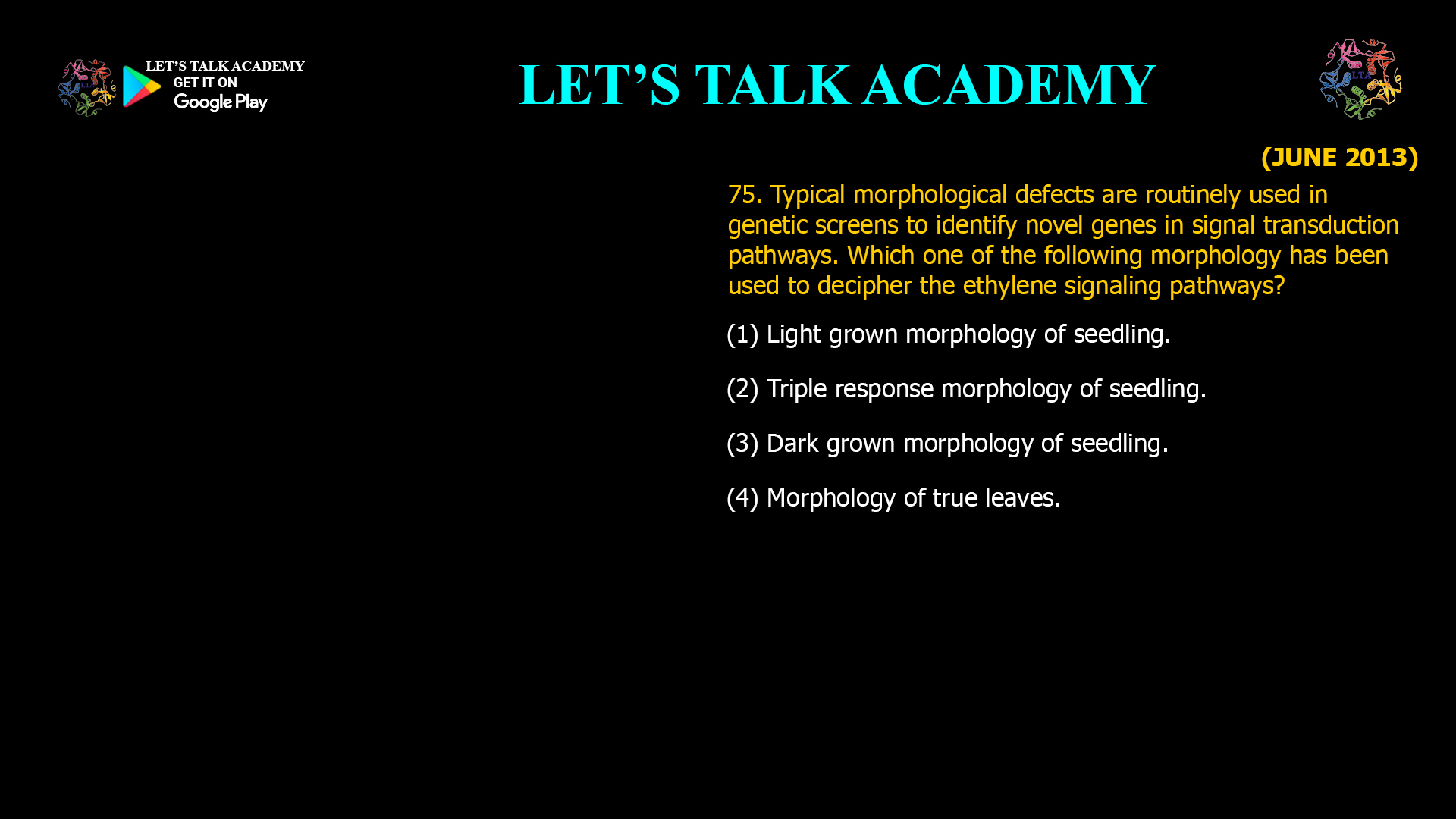- Typical morphological defects are routinely used in genetic screens to identify novel genes in signal transduction pathways. Which one of the following morphology has been used to decipher the ethylene signaling pathways?
(1) Light grown morphology of seedling.
(2) Triple response morphology of seedling.
(3) Dark grown morphology of seedling.
(4) Morphology of true leaves.
Correct answer: (2) Triple response morphology of seedling.
Explanation:
-
The triple response morphology—characterized by inhibited elongation of the hypocotyl and root, radial swelling (thickening) of the hypocotyl, and exaggerated apical hook formation—is a classic, well-established morphological phenotype used extensively to identify and study genes involved in the ethylene signaling pathway.
-
(1) Light-grown morphology is unrelated to ethylene signaling genetic screens, as ethylene-induced responses are usually studied in dark-grown seedlings.
-
(3) Dark-grown morphology alone is not specific for ethylene signaling mutants unless the triple response phenotype is studied.
-
(4) Morphology of true leaves is not a common phenotype used for ethylene signaling pathway genetic screens.
The triple response assay provides a robust, easy-to-score phenotypic tool for genetic dissection of ethylene action and has been pivotal in identifying ethylene biosynthesis and signaling components.
The triple response morphology—a combination of shorter, thicker hypocotyl, and exaggerated apical hook—is essential for studying and discovering novel ethylene signaling genes through genetic screens in dark-grown seedlings.



